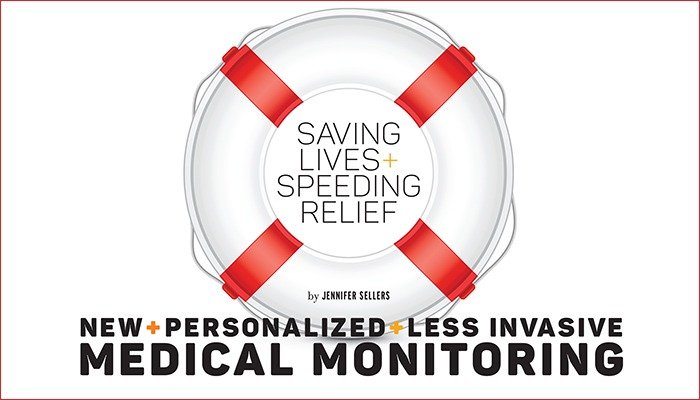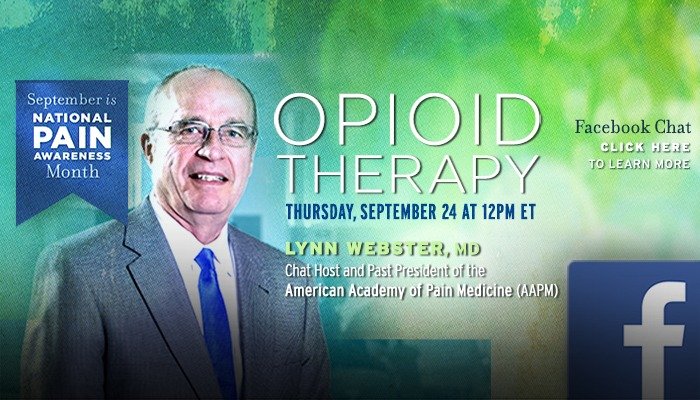Medical Monitoring

If you’re managing chronic pain with medication, you may be wondering why toxicology screens are needed and why you’re asked to participate in them. More than identifying prescription abuse, medical monitoring helps ensure proper medications at correct doses, and helps prevents harmful drug interactions or other forms of toxicity. Further, new advances in genetic testing offer more personalized care that can speed up pain relief—safely.
Medical monitoring helps your pain doctor evaluate whether you’re taking the correct medications and doses,and ensure that you aren’t experiencing drug interactions or other forms of toxicity. Advances in the drug-testing field are making this process increasingly more personalized.
UNIVERSAL PRECAUTIONS
One of the top concerns patients have about drug testing is that they feel they’re being singled out. Rest assured this isn’t the case. Consider security screenings at major events like ball games or concerts. Everyone is scanned even though not everyone is expected to be a threat. The same can be said for toxicology screens—it’s not personal.
It would be both impractical and unreliable for physicians to sift through their patient lists in an effort to find those most at risk for drug misuse. Because of this, doctors take the “universal precautions” approach.
According to Anne DePriest, PharmD, BCPS, clinical pharmacist and senior scientist for health care services at Aegis Sciences Corporation in Nashville, universal precautions were first developed to control infection. Because health care providers couldn’t be sure which organisms they were transmitting to or from different patients, they began using the same safety precautions for every patient. Likewise, pain specialists can’t always be certain which of their opioid-taking patients are most likely to be using the medications inappropriately, so they test all patients.
“When a physician is prescribing controlled substances to patients, he or she doesn’t know who’s likely to develop problematic use of that drug,” says Dr. DePriest. “Studies have shown that if a physician relies on things like patient demographics or even unusual behavior, they’re going to miss a significant number of patients who truly have a substance-abuse disorder. Because clinical judgment isn’t entirely reliable, an objective stance must be taken.”
The reason drug testing is such an important component of pain management is that prescription opioids and other controlled substances are frequently abused or misused—so much so that the Centers for Disease Control and Prevention (CDC) has declared prescription drug abuse an epidemic in the United States. According to the National Vital Statistics System, there are more deaths each year due to prescription drug overdoses than there are due to car crashes. Opioids alone lead to almost 17,000 deaths a year.
Such statistics aren’t meant to frighten users of prescription opioids. These are drugs that are important therapies for pain management in some patients. However, because they are powerful medications, physician monitoring is necessary.
“Prescription drug abuse and misuse are major problems in this country,” says Jennifer Strickland, PharmD, BCPS, general manager of pharmacogenetic testing at Millennium Health in San Diego. “It’s essential that clinicians and patients have conversations about opioid treatment, and that the physicians know exactly what’s going on. Screening helps achieve that.”
RISK OF POTENTIAL INTERACTIONS
While prescription abuse is a concern, identifying and safeguarding anyone who might not be using medications as prescribed or who might have potential drug interactions is another advantage of toxicology screening. There are many instances beyond chemical dependency and abuse in which a patient might be at risk of opioid misuse or toxicity. Populations whose opioid use and medication need to be assessed by a doctor include:
• Those new to opioid therapy
• Those who use prescriptions of family members in addition to their own prescriptions
• Those who, possibly due to low income, cut back on their recommended dose in order to save/stockpile medication
• Those who self-manage their pain and take additional doses without consulting their doctor
• Those who are taking additional medications prescribed by doctors other than their pain doctor.
“These are patients who may be very well-intentioned in their prescription use, but have something going on that might need to be addressed in the physician-patient relationship,” says Dr. DePriest. “For example,a patient could have been prescribed a cough syrup by his or her primary care physician, not knowing it may contain hydrocodone, which is another opioid. Or, they may have had another doctor prescribe a muscle relaxer, which can enhance the sedative effects the patient is already experiencing from the opioids.”
Toxicology screens allow physicians to assess these potential dangers while also helping them ensure a patient’s pain is being managed effectively.
PRACTICE-SPECIFIC GUIDELINES

When it comes to the types of screening a patient undergoes, and how often he or she must be tested, there are currently no standard guidelines. Each organization and clinical practice establishes its own rules and procedures.
Dr. DePriest explains that the only federal mandatory guidelines for drug testing are the ones applied to federal workers (although some states do have laws requiring drug testing for patients on prescription opioids). However, these standards,which are published by the Substance Abuse and Mental Health Services Administration, are not an ideal model for pain physicians to follow, since they primarily deal with illicit drug use and not prescription drug abuse.
Other organizations, such as the American Society of Addiction Medicine, provide guidance, but, ultimately, each practice uses its own clinical judgment about the standards it wants to establish.
While some physicians screen more often, typically patients on opioid therapy for six months or longer are subject to random drug testing every three to six months. A patient at a higher-than-average risk for medication abuse or misuse will likely undergo toxicology screens more frequently than a patient who is in a moderate- or low-risk category.
A risk assessment is usually a combination of patient history review and self-reporting. Self-reporting assessments involve patients filling out questionnaires about their prescription use.
Dr. DePriest says that women of childbearing age are also more closely monitored for inappropriate medication use. “A significant percentage of pregnant women are unaware that opioids could be harmful,” she says. “With pain medications, in particular, the baby can be born with withdrawal syndrome. Because a sudden discontinuation of opioids can also put the unborn baby at risk, physicians have been much more conscientious about monitoring and educating pregnant women.”
NEW+CUSTOMIZED DNA SCREENS

For all that safety toxicology screens achieve, they still have limits. Not every misuse, interaction or abuse will be identified at the right time. Toxicity related to appropriate use can also be missed when genetic factors collide with medication.
Consider this tragedy: a newborn overdosed because the mother was prescribed codeine for post-labor pain. Unbeknownst to her or her physician, she was an ultra-rapid metabolizer of codeine. In a person with this genetic predisposition, the body will break down the codeine rapidly, turning it into morphine, explains Dr. DePriest. In this case, the morphine was excreted into the mother’s breast milk.
Shortly after this incident, the FDA released a warning that women who are pregnant or nursing should be evaluated for this genetic predisposition before taking codeine.
The other side of the coin is that a person may not metabolize codeine well at all. While this may eliminate dangerous side effects, it also eliminates the pain-reducing effect of morphine in the drug. As a result, the person’s pain goes unmanaged.
PHARMACOGENETIC TESTING
Thankfully, these factors can now be identified. A new form of drug testing called pharmacogenetic testing evaluates a patient’s DNA so that the physician can prescribe more targeted medications and doses, and also identify whether a patient is at higher risk of addiction.
“Pharmacogenetic testing is about helping prescribers choose medications more effectively so that patients are more likely to get the right medication and the right doseat the right time,” says Dr. Strickland.“One simple test tells us which medications a patient is more or less likely to respond to, and what side effects that patient is likely to experience. It removes the trial-and-error approach.”
As someone who worked in clinical pain management, Dr. Strickland believes that pharmacogenetic testing can be particularly helpful for people with chronic pain.
“Patients with complex pain disorders can often suffer months, years or even decades without finding the best medication for their pain,” she says. “Or, they struggle with side effects so they can’t find an effective dosage. I think this is really one of the first objective tools clinicians can use to sort out that complexity and get the patient the best outcome down the quickest path.”
Pharmacogenetic testing, using a simple cheek swab, detects gene variants, and what they mean for the patient in terms of medication usage.
Dr. DePriest is a member of the Clinical Pharmacogenetics Implementation Consortium, which is working to review the evidence and recommend guidelines for pharmacogenetic testing. She points out that the tests and resulting recommendations are backed by evidence-based medicine. “We’re partners in providing scientific information to the provider and the patient,” she says. “This is a three-way partnership; we’re not the drug-abuse police.”
Another advantage of pharmacogenetic testing is that it’s needed only once in your lifetime. “Your genetic pro -file won’t change,” Dr. Strickland points out.
The one time nature of the testing also makes it financially advantageous, particularly when compared to the long-term cost of prescription medications—some of which may not be providing optimal pain management for certain patients.
In many cases, pharmacogenetic testing is covered by individual insurance companies and Medicare, but patients are encouraged to check with their providers.
Patients can expect to see pharmacogenetic testing becoming more common at pain clinics. Many practices have already adopted the method. Dr. Strickland says that the testing is rapidly evolving as scientists identify more genes related to medications’ effects on the body.
While pharmacogenetic testing has promising implications for pain management and prescription drug use, Dr. DePriest cautions that it’s still only one piece of the drug-screening puzzle. “It’s not a one-size-fits-all approach,” she says. “The importance of it is tied to individual patients’ needs and the drugs they’re prescribed. Clinical assessment is still critical.”
MAKING TOXICOLOGY SCREENS EASIER ON PATIENTS
Pharmacogenetic testing is a fascinating advancement in medical monitoring; however, it’s not the only area of progress in the field. The administration of toxicology screens has also evolved over the years. In particular, a mode of testing called “oral fluid testing” is quickly becoming commonplace in pain clinics.

ORAL FLUID TESTING
By evaluating saliva, oral fluid testing offers patients a more convenient screening process. “Urine testing requires patients to provide a sample on the spot, which some people may not be able to do at a given moment,” says Dr. DePriest. “And then there’s blood testing, which is not only invasive, it’s also less reliable. Oral fluid testing, however, is very easy for the patient—and it’s dependable because of the high concentration of opioids in saliva.”
As testing becomes more refined, the lab reports they generate are getting more detailed, leaving less room for misinterpretation. For example, reports can show that patients who take OxyContin—particularly at higher doses—are at an increased risk of testing positive for hydrocodone.This is because pharmaceutical impurities can enter a drug during the manufacturing process. While the only ingredient listed for OxyContin is oxycodone, up to 1percent of OxyContin can include hydrocodone. If a patient’s toxicology screen provides only analytical results, the test could make it appear that the patient is taking another opioid.
To avoid these kinds of scenarios, testing labs are conducting more research into incidental variables so that they can offer physicians detailed interpretations of toxicology screen results.
“Any advancement in medication monitoring should be to provide physicians with more accurate, actionable information, and patients with improved care and peace of mind,” says Dr. Strickland.
Dr. DePriest agrees. “While it may be seen as just ‘drug testing,’ it’s a way to make healthcare more personalized than ever before.” {PP}
PainPathways Magazine
PainPathways is the first, only and ultimate pain magazine. First published in spring 2008, PainPathways is the culmination of the vision of Richard L. Rauck, MD, to provide a shared resource for people living with and caring for others in pain. This quarterly resource not only provides in-depth information on current treatments, therapies and research studies but also connects people who live with pain, both personally and professionally.
View All By PainPathways






